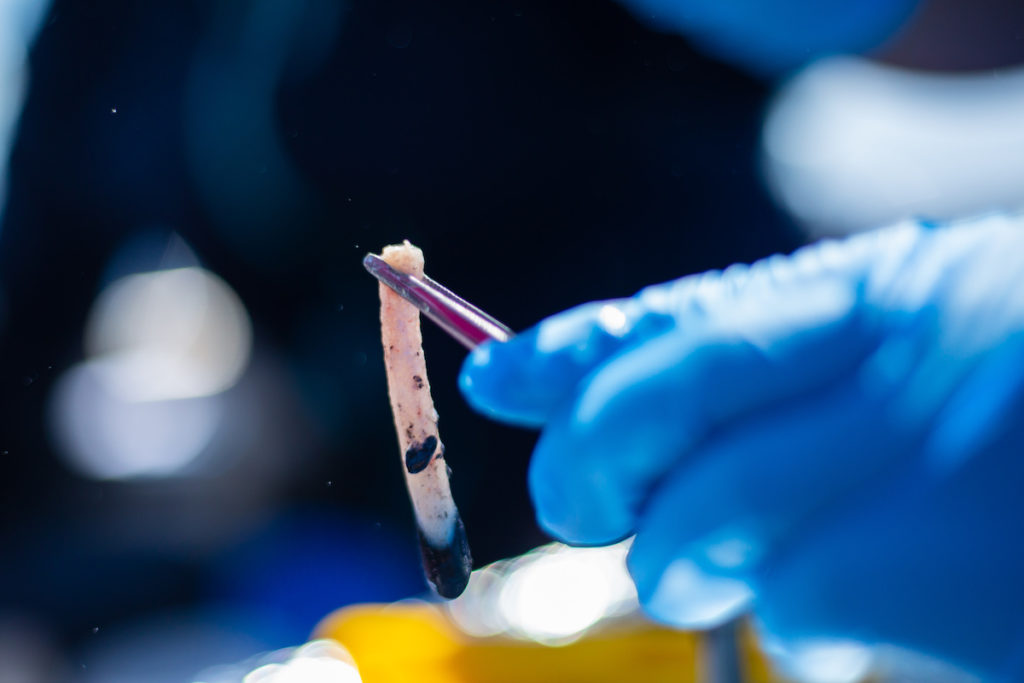
Skin, not blubber is the most effective way of revealing migrating whales' diet, according to new Griffith University research.
Assessing the whales' blubber and skin tissues, the Southern Ocean Persistent Organic Pollutants Program team from the Centre for Planetary Health and Food Security together with collaborators at the Australian Rivers Institute, concluded skin was the more suitable tissue for dietary assessment of humpback whales, but fats in the skin still interfered with the chemical signal.
"Blubber and skin samples taken with dart gun from whales migrating from Antarctica are often used to discover the make-up of their diet in the Southern Ocean, and how it's changing over time," said PhD candidate Jasmin Gross.
"Unfortunately, the high levels of a particular type of carbon (13C) in fats within the tissue, compared to proteins or carbohydrates, confounds diet interpretations of the samples.
"Solving this problem is crucial, as the chemical signal of carbon and nitrogen in these samples from migrating whales provides one of the only ways to look at both the health of the whale population and Southern Ocean ecosystem in which they live."
The team investigated two ways to account for the confounding effect of fats on diet interpretations: to chemically extract the fats out of the samples or to mathematically correct for the effect of the fats.
"While extracting the fats corrects the chemical signal for carbon in the sample, unfortunately it also negatively affects nitrogen, both of which are needed to identify the source of the whale's diet," Ms Gross said.
 "We need an accurate signal for both carbon and nitrogen to maximise efficient use of the small amount of tissue we can sample, and streamline cost and effort associated with analyses."
"We need an accurate signal for both carbon and nitrogen to maximise efficient use of the small amount of tissue we can sample, and streamline cost and effort associated with analyses."
For this reason, the researchers also tested mathematical methods of correcting effect of the fats.
"We found the mathematical methods provided a more accurate alternative technique for dietary studies of southern hemisphere humpback whales and other animal samples with high fat content,'' Ms Gross said.
"With the Southern Ocean vulnerable to the effects of climate change, this research will improve the accuracy of diet investigation of southern hemisphere humpback whales and our understanding of the feeding ecology of this Antarctic krill consumer."
This research, published in Rapid Communications in Mass Spectrometry, was undertaken as part of the Humpback Whale Sentinel Program, a long-term biomonitoring program for circumpolar surveillance of chemical pollution and ecosystem shifts in the Antarctic sea-ice ecosystem.






